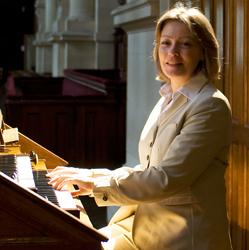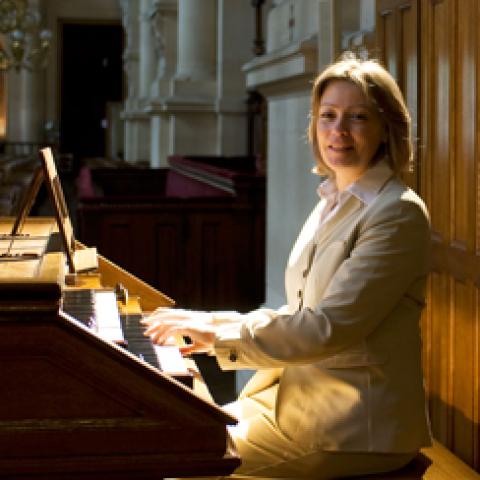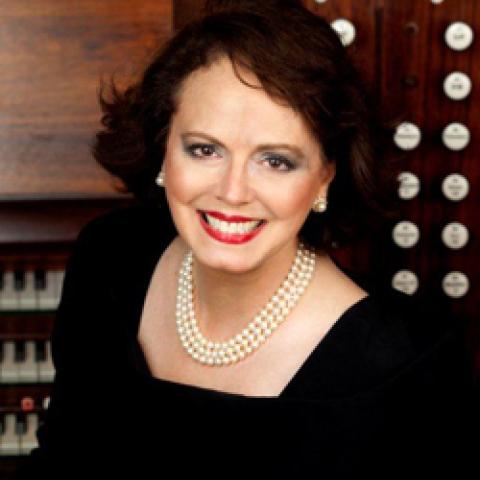
A French-American organist and musicologist, Carolyn Shuster Fournier, born in Columbia, Missouri, studied the piano and the violin before specializing in the organ at the age of thirteen under the direction of Dr. Gary Zwicky in Charleston, Illinois. After obtaining her Bachelor of Music at Wheaton College, Illinois, with honors (studying organ with Gladys Christensen) and her Master’s degree from New England Conservatory, Boston (under the guidance of Yuko Hayashi), she continued her studies in Paris with Marie-Claire Alain, André Isoir and Michel Chapuis. Her doctoral thesis on Aristide Cavaillé-Coll’s secular organs received Olivier Messiaen’s congratulations.
Formerly organist at the American Cathedral in Paris, in 1989 she was then named titular of the 1867 Aristide Cavaillé-Coll choir organ at the Trinité Church where she founded their weekly Thursday noontime concert series. Recognized for her clear, precise musical playing, she has performed on historic organs in prestigious festivals, such as in Methuen, Bruxelles, Sion, at the Venerables in Sevilla, at the Notre-Dame Cathedral in Paris, in Marmoutier, at the Festival Musica in Strasburg, on the Fromentelli Dom Bedos organ in Rieti, at the Jacobi Kirche in Hambourg). She has inaugurated organs and premiered numerous contemporary works.
Her recordings – notably Alexis Chauvet at the Versailles Cathedral (Socadisc), In Memoriam Marcel Dupré with the violoncellist Julius Berger (Schott) and An American in Paris at La Madeleine Church in Paris and In Memoriam Nadia Boulanger on the Cavaillé-Coll/Merklin organ at the Saint-Antoine-des-Quinze-Vingts Church in Paris (Ligia Digital, distribution Harmonia Mundi) – have been acclaimed by critics.
In 2007, Carolyn Shuster Fournier was awarded the prestigious distinction of Chevalier de l’ordre des Arts et des Lettres from the French Ministry of Culture and Communications.




